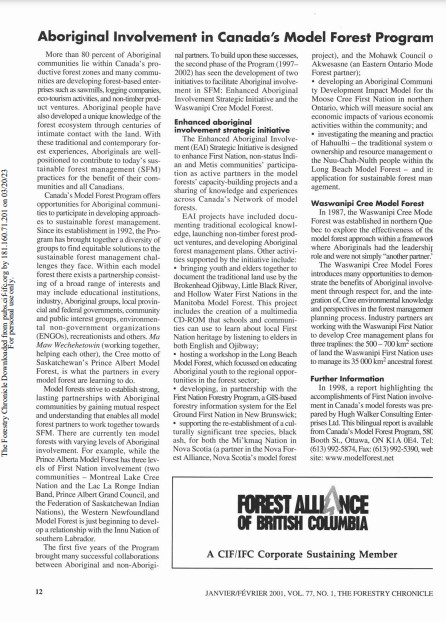Aboriginal involvement in Canada's model forest program.
Bosque Modelo:
Red Internacional de Bosques Modelo
Temática:
Gestión forestal
Tipo de documento:
Artículo científico
Resumen
More than 80 percent of Aboriginal communities lie within Canada's productive forest zones and many communities are developing forest-based enterprises such as sad9, logging companies, eco-tourism activities, and non-timber product ventures. Aboriginal people have also developed a unique knowledge of the forest ecosystem through centuries of intimate contact with the land. With these traditional and contemporary forest experiences, Aboriginals are wellpositioned to contribute to today's sustainable forest management (SFM) practices for the benefit of their communities and all Canadians. Canada's Model Forest Program offers opportunities for Aboriginal communities to participate in developing approaches to sustainable forest management. Since its establishment in 1992, the Program has brought together a diversity of groups to find equitable solutions to the sustainable forest management challenges they face. Within each model forest there exists a partnership consisting of a broad range of interests and may include educational institutions, industry, Aboriginal groups, local provincial and federal governments, community and public interest groups, environmental non-government organizations (ENGOs), recreationists and others. MaMaw Wechehetowin (working together, helping each other), the Cree motto of Saskatchewan's Prince Albert Model Forest, is what the partners in every model forest are learning to do.
Información Bibliográfica
Autor:
Canada's Model Forest Program
Revista:
Forestry Chronicle
Año:
2001
N°:
1
País :
Canadá
Páginas:
12
Volumen:
77
Idioma:
Ingles
Palabras claves
Model forest, canadian, Aboriginal





